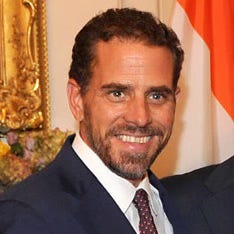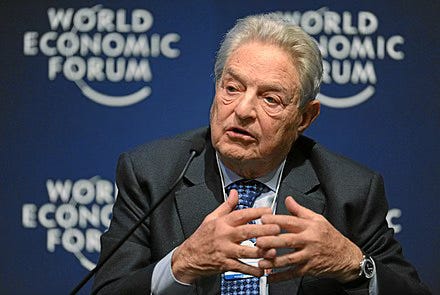The CIA's Covert Empire: From WWII Intelligence to Silicon Valley Spies
How Today’s Heroes Become Tomorrow’s Villains
As part of our “Machine” series (inspired by the excellent work of Paul Kingsnorth), we also delve into the intricate web of institutional and cultural structures that subtly, yet persistently, divert your attention from what truly matters—your faith, family, and purpose. By uncovering these underlying mechanisms, we aim to shine a light on these subtle tools of manipulation so that you can reclaim your focus and prioritize the core aspects of your life that bring genuine fulfillment and meaning.
The CIA's Global Web of Influence
The story of the CIA's influence on global politics, media, and technology is a complex web of power and manipulation that has shaped the modern world. This intricate narrative began in the aftermath of World War II, a time when the victors set about crafting a "rules-based international order" ostensibly to stabilize and rebuild the world economy. Central to this vision were organizations like the United Nations (UN), the International Monetary Fund (IMF), and the World Bank. While presented as neutral bodies, these institutions were often instruments of deeper strategies, cementing the dominance of powerful nations, particularly the United States. Behind this facade of benevolence, secret groups within the United States, including the CIA, maneuvered to shape global dynamics to their advantage.
The CIA's reach extended into media and technology, arenas that became battlegrounds for influence and control. Through a network of operatives and sympathizers, the agency shaped news narratives and controlled the flow of information, blurring the lines between reality and propaganda. As the world entered the digital age, the CIA found new avenues for its influence, embedding itself within the burgeoning tech industry. Here, amidst innovation and progress, lay opportunities for surveillance and manipulation on an unprecedented scale. The true narrative of power, thus, remains hidden beneath layers of deception and intrigue, with the CIA at the heart of this shadowy web.
The Birth of the CIA and the Doctrine of Plausible Deniability
In 1947, the Central Intelligence Agency (CIA) was established under the National Security Act, embodying the principle of "plausible deniability." This doctrine allowed the U.S. government to conduct covert operations without direct attribution, thereby maintaining an official stance of innocence. Through the CIA, the U.S. could influence global events, overthrow governments, and manipulate political outcomes while publicly denying any involvement. The same period saw the Department of War being renamed the Department of Defense, a strategic rebranding that suggested a more defensive and less aggressive military posture—at least publicly. This renaming was part of a broader effort to reshape America's image in the post-war world, projecting a narrative of peace and stability while covertly expanding its reach and securing its interests on a global scale.
Mr. X and the Italian Election: The CIA’s First Foray
A significant figure in the early CIA was George Kennan (then known as Mr. X), who in 1948 emphasized the need for global political warfare in a now-famous memo, The Long Telegram. Kennan's memo outlined strategies for undermining adversarial governments and influencing global politics through covert means. That same year, the CIA orchestrated its first major covert operation by rigging the Italian election. By collaborating with the Church and the mafia, the CIA ensured a pro-American government in Italy, setting a precedent for future interventions in foreign affairs. This operation demonstrated the CIA's willingness to engage with unsavory elements and employ manipulative tactics to achieve its goals, marking the beginning of an era of clandestine influence that would shape the political landscape of numerous countries in the decades to come.
Wisner’s Wurlitzer: Manipulating the Media
Throughout the 1950s and 60s, the CIA expanded its influence by manipulating media across the globe through a program known as "Wisner's Wurlitzer," named after Frank Gardiner Wisner, one of the CIA's founding officers. This program funded media organizations on all six populated continents via foundations and offshore accounts, subtly shaping public opinion to align with CIA agendas. Newspapers, magazines, radio stations, and even television networks received covert funding, ensuring that the narratives they presented were favorable to American interests. This manipulation extended beyond mere propaganda; it involved creating an environment where dissenting voices were marginalized, and the preferred perspectives of the CIA were amplified. By controlling the flow of information, the CIA could effectively influence global perceptions and political outcomes, embedding its ideology within the very fabric of international media.

The National Endowment for Democracy: Covert Control Over The People
In 1983, the CIA established the National Endowment for Democracy (NED), a private non-governmental organization (NGO) designed to serve as a CIA cutout. NED operates through two main branches: the National Democratic Institute (NDI) for Democrats and the International Republican Institute (IRI) for Republicans. This setup allowed the CIA to continue its political influence under the guise of promoting democracy worldwide. By funding political parties, civic groups, and media outlets in other countries, NED could shape political landscapes and sway elections without direct attribution to the U.S. government. This clever facade of democracy promotion masked a deeper agenda of maintaining American geopolitical dominance, ensuring that governments and movements aligned with U.S. interests could flourish while those opposed were systematically undermined.

The Rise of Digital Statecraft: Social Media as Social Manipulator
Enter Jared Cohen, a young phenom who joined the State Department under the Bush administration and continued through the Obama administration. Notably, Cohen was one of the few officials who kept on during the transition, a testament to his influence and vision. Cohen's expertise in leveraging "digital statecraft" and using social media for intelligence operations earned him significant recognition, most notably during the Arab Spring. His innovative approaches helped to harness the power of digital platforms to gather intelligence and influence political movements, showcasing the potential of new technologies in statecraft.
In 2010, Cohen transitioned to Google, leading Google Ideas (later Google Jigsaw). This move symbolized the merging of CIA objectives with the vast resources and global reach of Google. At Google, Cohen oversaw the development of tools like "Perspective," an AI-powered system designed to rate online content and remove posts deemed "toxic." This technology sparked concerns about potential censorship and the manipulation of public discourse. Critics argued that while these tools were presented as efforts to curb online harassment and hate speech, they also possessed the potential to stifle free expression and shape public opinion according to the agendas of those controlling the technology. Cohen's work at Google thus represents a continuation of the covert strategies he employed at the State Department, now enhanced by the technological prowess of one of the world's most influential companies.

Google's Ascent: Aided by Intelligence Funding
During this time, Google's ascent to tech dominance was significantly bolstered by grants from the CIA and NSA. These investments helped Google innovate and expand its capabilities, integrating advanced technologies initially developed for intelligence purposes. A notable example is the acquisition of Google Maps technology, which was originally developed from the CIA's keyhole satellite software. This provided Google with a substantial edge over competitors, solidifying its position as a leader in digital mapping and geospatial data.
Cohen's journey from government to Google, and later to Goldman Sachs, exemplifies the revolving door between public and private sectors, raising questions about insider trading and conflicts of interest. His seamless transition highlights how expertise and influence gained in public service can be leveraged for significant advantage in the private sector. This movement between influential roles not only underscores the deep connections between government agencies and major corporations but also prompts scrutiny over the potential for insider knowledge to drive business decisions. Cohen's career thus reflects broader concerns about transparency and accountability in the interplay between state power and corporate interests.



Soros and the CIA: An Alliance of Influence
Another key player in this narrative is George Soros, who founded the Open Society Foundation in 1979. Soros' foundations became integral to the CIA's strategy of using NGOs for political influence, particularly in Eastern Europe during the Cold War. Acting as intermediaries between the CIA, the State Department, and revolutionary groups, Soros' organizations played a crucial role in aiding the overthrow of communist governments. Ronald Reagan would notify Soros of the CIA’s plans, and Soros would short the currency of the targeted country, compounding the economic destruction designed by the CIA. This collaboration showcased a seamless blend of financial acumen and covert operations, magnifying the impact of U.S. strategies to destabilize adversarial regimes.

Despite his left-wing reputation, Soros has deep ties to both Democratic and Republican establishments. His foundations have consistently advanced U.S. foreign policy objectives, making him a pivotal figure in the CIA's global strategy. This duality in Soros’ affiliations underscores the often-overlooked bipartisan nature of American geopolitical maneuvers. For instance, John McCain has been funded by Soros since 2001 through the Reform Institute, an organization McCain founded to receive contributions from Soros’ Open Society Institute and Teresa Heinz Kerry’s Tides Foundation. The institute promoted McCain's political agenda and compensated key campaign operatives between elections. Through the Open Society Foundation, Soros has been able to influence political outcomes while maintaining the appearance of promoting democratic values and human rights. His role exemplifies how private individuals and entities can be instrumental in executing state strategies, blurring the lines between public and private interests in the pursuit of global influence.



The Ukraine Nexus: Energy, Politics, and Power
In Ukraine, Soros and the U.S. government played crucial roles in the privatization of state-owned assets, particularly in the energy sector. This privatization process allowed Western corporations and financial firms to acquire valuable assets at discounted prices, while Soros and other well-connected investors profited from insider knowledge of these deals. For example, Burisma Holdings secured exclusive rights to the Black Sea's offshore oil reserves. The IMF and World Bank, influenced by U.S. interests, pressured Ukraine to privatize these assets to pay off debts, facilitating the acquisition of valuable resources by Western entities at favorable rates.

Hunter Biden's position on the board of Burisma Holdings highlights the intricate connections between U.S. political figures, energy interests, and CIA influence in Ukraine. Simultaneously, Biden served on the advisory board of the National Democratic Institute (NDI), a CIA cutout organization, further underlining the deep entanglement between these entities. These roles illustrate how political leverage and insider connections can be utilized to influence foreign economic policies for strategic gain.
U.S. financial interests in Ukraine extend beyond the energy sector. In recent years, Ukraine has implemented a digital ID system called the Diia app, developed with support from the U.S. Agency for International Development (USAID) and several U.S. tech giants. The app, mandatory for all Ukrainian citizens, links users' personal data to their digital identity, granting the government and partnered corporations unprecedented access to and control over the population.


The development of the Diia app showcases the collaboration between the U.S. government, CIA-linked NGOs, and major tech companies in shaping Ukraine's digital infrastructure. This digital ID system not only benefits U.S. corporate interests but also allows for greater surveillance and control over the Ukrainian population, raising concerns about data privacy and civil liberties. The integration of this technology underscores the continuing influence of U.S. strategic interests in Ukraine, reflecting broader patterns of leveraging technological advancements for political and economic control.
Trump, Ukraine, and the Unseen Power Struggles
The Trump-Ukraine scandal in 2019, which led to President Trump's impeachment, brought the complex web of U.S. interests in Ukraine into the spotlight. At the heart of the scandal was Trump's threat to withhold military aid to Ukraine, impacting the financial interests of the Soros-linked political establishment and Western entities invested in Ukraine's energy sector, including Burisma Holdings. Notably, even figures like Mitt Romney have deep connections to the region, further illustrating the bipartisan nature of U.S. involvement. Romney's former advisor, Cofer Black, served on the board of Burisma Holdings, highlighting the interconnectedness of political, corporate, and intelligence interests.
This scandal exposes the deep-rooted connections between the CIA, Big Oil, and Big Tech going as far back as WWII. It demonstrates how these actors work in concert to shape global events and maintain their grip on power. The collaboration between intelligence agencies, multinational corporations, and influential political figures illustrates a pattern of maneuvering that transcends administrations and political affiliations. By leveraging economic influence, technological advancements, and covert operations, these entities continue to shape global dynamics, ensuring the perpetuation of their interests and maintaining a strategic advantage on the world stage.

The CIA's Enduring Grip on Global Power
This intricate narrative reveals the deep-rooted connections between the CIA, Big Oil, and Big Tech, stretching back to World War II. It demonstrates how these actors work in concert to shape global events and maintain their grip on power, underscoring the enduring influence of the CIA in global politics, media, and technology. From orchestrating elections and manipulating media to leveraging technological advancements and economic influence, the CIA's reach has permeated every corner of the globe, shaping the modern world in profound and often unseen ways.
As George Orwell aptly noted in his dystopian novel 1984: "Always eyes watching you and the voice enveloping you. Asleep or awake, indoors or out of doors, in the bath or bed—no escape. Nothing was your own except the few cubic centimeters in your skull." This chilling observation serves as a reminder of the pervasive surveillance and control exerted by these powerful entities. The intricate web of influence woven by the CIA, in collaboration with major corporations and political figures, highlights the delicate balance between security and freedom, and the constant vigilance required to maintain democratic ideals in the face of such overwhelming power.
This article is based on an excellent interview with ex-State Dept. official @MikeBenzCyber on @rustyrockets’ Rumble show, Stay Free. The full interview is worth listening to. It is linked below:










